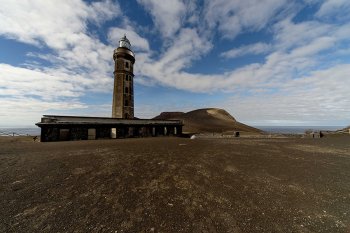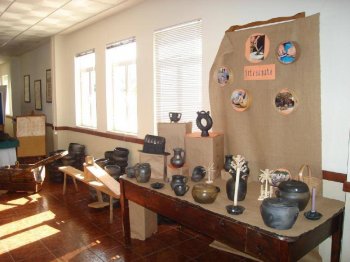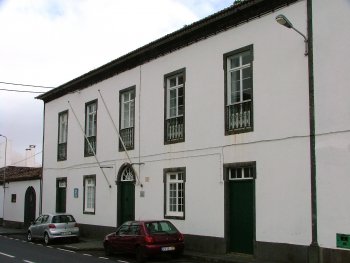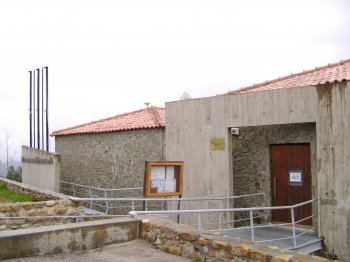Explore the best places
Heritage in Portugal
Forte de Santiago do Outão / Farol do Outão / Hospital Ortopédico do Outão
- heritage
EN379
2900, Outão
Fort located at the foot of Serra da Arrábida. Its tower is dated from 1390. In 1572 it suffered enlarging works and was completely remodelled after the Restoration War. The chapel, covered with glazed tiles from the XVIII century, is worthy of notice. In the XIX century it was a prison and later the holydays residence of King D.Carlos and Queen D. Amélia. In 1909; it became a hospital for orthopaedic diseases and maintains its function until today.

Farol de São Miguel
- heritage
Rua do Passeio Alegre, 494
4150, Porto
It was the first fire light in Portugal and was built in 1527, by the commendatory of the Santo Tirso Monastery, D. Miguel da Silva, who left incomes to lit fires at night, perpetually.

Farol do Cabo Espichel
- heritage
Cabo Espichel
2970, Sesimbra
The construction of the Cape Espichel lighthouse, dating back to 1790, is linked to the first attempt of lighting up the Portuguese shoreline (known as the "dark coasts" by the British sailsmen until the second half of the 18th century). The lighting system was changed only in 1883. From then on, ther were several changes made in order to improve the signaling, both of sound and vision. Currently, the lighthouse can be viewd from a distance of 26 miles and is fully automated.

Farol da Ponta dos Capelinhos
- heritage
Capelo
9900-304, Horta
The Capelinhos lighthouse was completed in 1903, after works that took over nine years. Its primary function was maintained until 1957, when it was the eruption of the volcano. From that date was in ruins. Consists of a rectangular body of two floors (one of which buried) and a central octagonal tower. Their retraining and integration into the interpretation centre of Capelinhos volcano allows, nowadays, the ascent to its central tower from where you have a unique view on the rugged volcanic landscape.

Farol de Vila Real de Santo António
- heritage
EM511
8900-211, Vila Real de Santo António
Localizado na margem direita do rio Guadiana, este farol funciona desde 1923. A sua torre circular, com 40 metros, proporciona magníficas vistas sobre a serra e o mar.

Muralhas do Forte de Vila Franca do Campo
- heritage
Rua do Baixio
9680-138, Vila Franca do Campo
The walls of the old Tagarete pier fort, which served as protection against corsair attacks in the 17th and 18th centuries, still remain present today, separating the fishing port from the marina of Vila Franca do Campo.

Biblioteca Municipal de Vila Franca do Campo
- heritage
Rua Teófilo Braga, 105
9680-115, Vila Franca do Campo
Place dedicated to reading, located in the center of Vila Franca do Campo.

Museu Municipal de Vila Franca do Campo
- heritage
Rua Visconde do Botelho
9680-178, Vila Franca do Campo
The result of a protocol signed between the City Council and the University of the Azores, this museum is organized with a central space, the Municipal Museum, and three museum centers integrated into the community: the Olaria museum center, the Forno de Loiça and the Fábrica da Luz museum center. Here you can see pottery objects, ceramics, learn about traditional arts and crafts and appreciate a collection of traditional vessels from the Azores. It also works as a research center in the areas of Archaeology, Ethnography and History.

Casa do Capitão-Mor
- heritage
Rua Capitão-Mor, 23
6110-206, Vila de Rei
Civil construction from the 17th century, with ten balcony windows, interrupted by the coat of arms of the Mattos e Silva family and by a niche where the image of Queen Saint Isabel appears, alluding to the passage of Dom Dinis' wife through this town who spent the night in a building where this house was later built. During the French invasions, it was the headquarters of the Portuguese-English troops, and the Duke of Wellington and General Beresford stayed here.

Museu da Geodesia de Vila de Rei
- heritage
Vila de Rei
6110-123, Vila de Rei
Museum located in the Geodesic Center of Portugal, at the top of the Melriça mountain range, resulting from a partnership with the Portuguese Geographic Institute. Here you will find objects and documents on display about Picoto da Melriça and the evolution of cartography from the 19th century onwards. It also has a small store with objects related to the municipality and geodesy, a multimedia auditorium and a bar.
